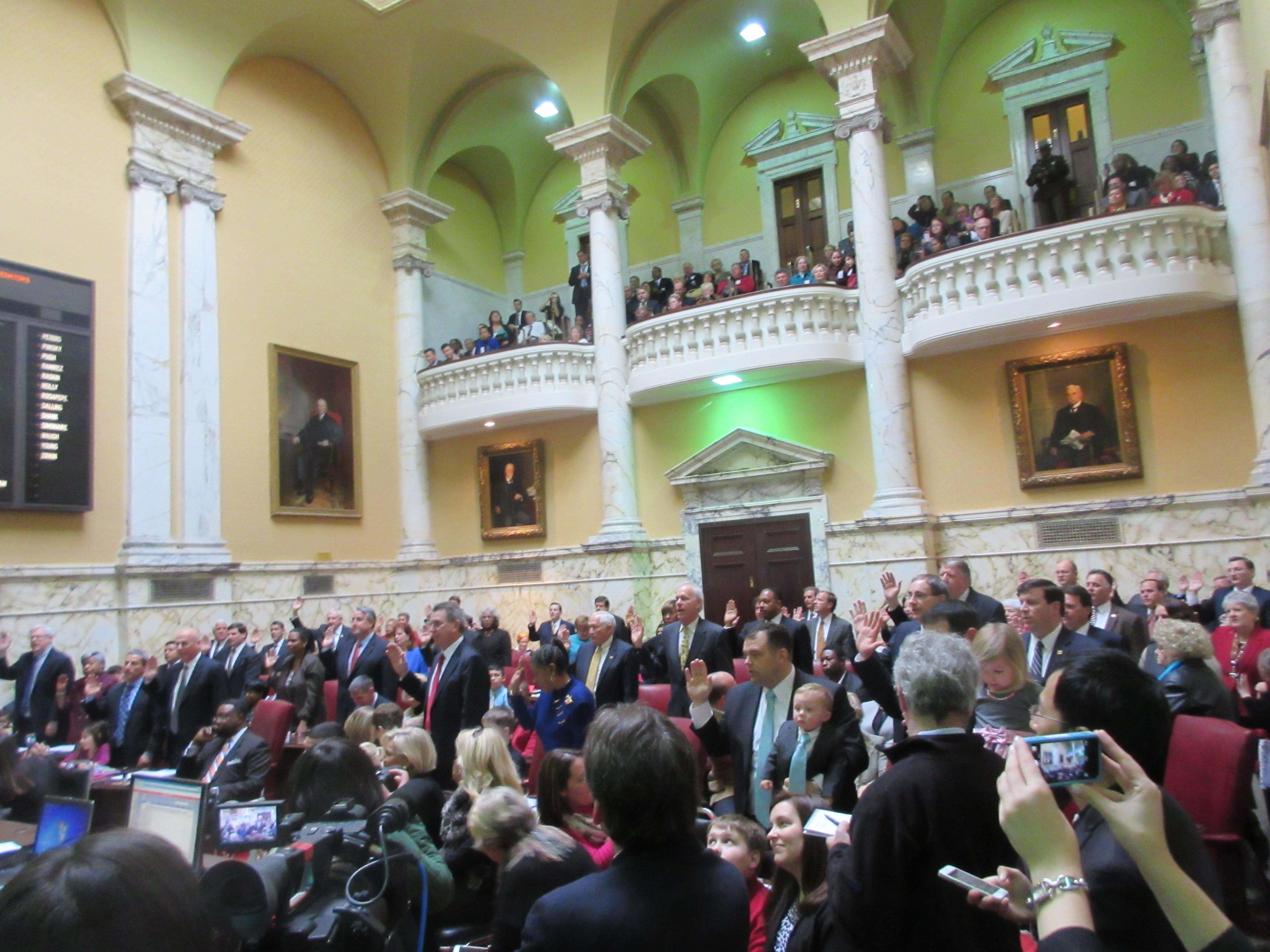By Megan Poinski
Megan@MarylandReporter.com
The Governor’s Redistricting Advisory Committee will have several public hearings throughout the state this summer in order to give people a chance to give their input on where lines should be drawn for congressional and state legislative districts.
“We have the very important role of hearing from the public as the state goes through this once-a-decade process,” said Jeanne Hitchcock, the committee’s chairwoman, at the committee’s organizational meeting on Wednesday. Hitchcock is Gov. Martin O’Malley’s appointments secretary.

This map from the Department of Planning shows population growth during the last decade in the state's eight current congressional districts.
Every 10 years, after the U.S. Census, the redistricting process begins. Its purpose is to ensure that each Maryland member in the U.S. House of Representatives represents the same number of residents, and that each of the 47 state legislative districts has close to the same amount of people living in it.
Maryland’s population grew about 9% since the 2000 Census, and the state will keep eight members of the U.S. House of Representatives.
The committee will be working with the public to put together two proposals for O’Malley. One proposal will draw the lines for the state’s eight congressional districts, and will be presented to the governor this fall. The second proposal will draw the state’s 47 legislative districts, and will be presented to O’Malley in December.
Because the congressional districts need to be drawn in time for the April 3 primary election in 2012, the General Assembly will meet in a special session to approve them, likely to be the week of Oct. 17.
The other committee members are Senate President Mike Miller, who has served on the previous two commissions in 2001 and 1991; House of Delegates Speaker Michael Busch; Prince George’s County businessman Richard Stewart; and former Del. James King, the only Republican.
Between now and September, somewhere between eight and 12 hearings on redistricting will be held throughout the state. Hitchcock said that the meeting schedule is likely to be put together this week.
O’Malley will look at the recommendations from the committee and finalize both proposals, presenting them to the General Assembly for its approval.
The state legislative districts will be presented to the General Assembly on its first day of the 2012 regular session. The General Assembly will have 45 days to act on it, and the governor’s plan goes into effect if the legislature fails to enact an alternative.
Assistant Attorney General Dan Friedman, who advises the legislature, presented some of the law behind redistricting at Wednesday’s meeting. For Congressional districts, there should be as close to the exact same number of people represented by each representative as possible.
“If the population of the state is divisible by eight, each district should have the exact same number of people,” Friedman said.
Federal law also requires that Congressional districts be drawn so that racial and ethnic minorities will be able to elect representatives from their communities, Friedman said,
For state legislative districts, Friedman said the goal is to make all 47 close to equal, with variances of less than 5% of the state’s total population. They also need to be contiguous, as compact as possible, and give regard to natural and political boundaries — standards in the state constitution that congressional districts do not have to meet.




Just because the state constitution does not require Congressional districts to be compact does not mean that the Governor and Legislature cannot create compact Congressional districts. I would like to see Maryland join the handful of states that have developed non-partisan processes to create their Congressional districts.
If Congressional districts nationwide were more compact and less partisan, we would see more competitive Congressional races and fewer candidates on the far right and far left getting into Congress.
We got gerrymandered into Cumming’s district last time. It’s been 10 years without a representative in Washington. One can only hope that things will change this time around and our district will no longer lool like a Rorshach test.